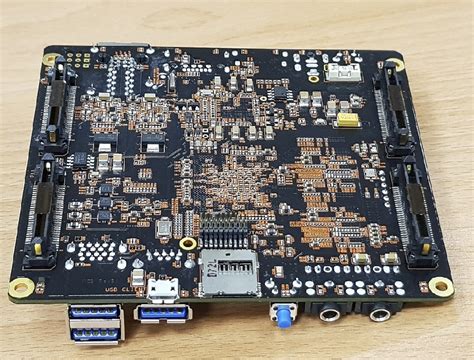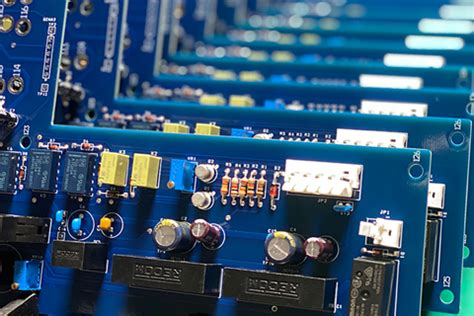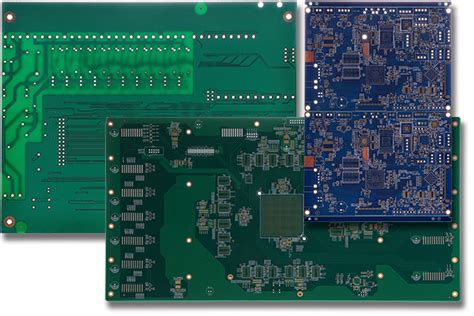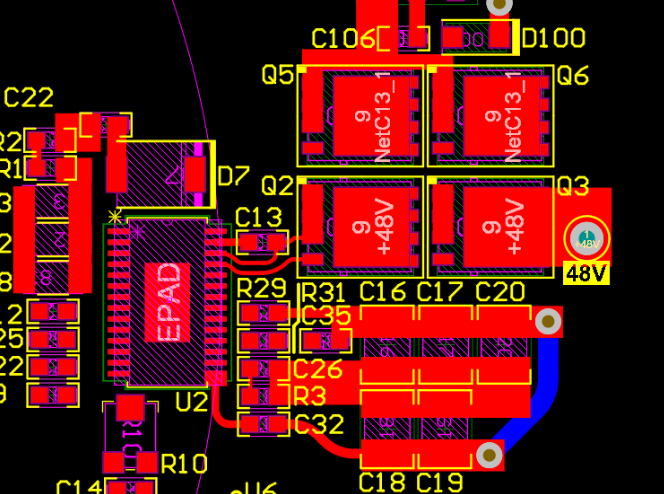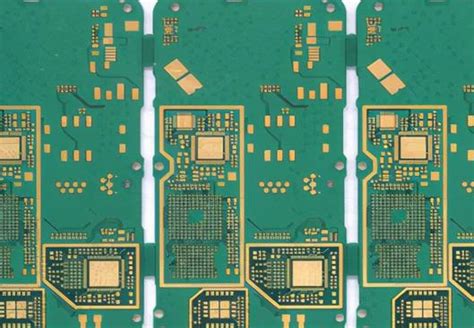Efficient Solutions for Consigned PCB Assembly Services
Key Takeaways
In the realm of electronics manufacturing, understanding the fundamentals of consigned PCB assembly is crucial for maximizing efficiency and minimizing costs. One of the standout features of this approach is its capacity to enhance flexibility, allowing businesses to adapt swiftly to market demands without extensive lead times. The integration of pcba services not only streamlines logistics but also affords manufacturers greater control over their inventory, ensuring that components are available when needed. Furthermore, utilizing pcb assembly services can lead to significant reductions in overall production costs as firms leverage their resources more effectively. By focusing on best practices for quality assurance, companies can uphold the integrity of their products, assuring clients that they are receiving top-tier components. Collaborative efforts with supply chain partners can further optimize these processes, driving continuous improvement and long-term success in the fast-paced world of electronic manufacturing. Ultimately, a well-structured consigned assembly strategy not only highlights key advantages but also sets the stage for scalability and future growth, ensuring businesses stay competitive in a rapidly evolving landscape.
Introduction to Consigned PCB Assembly
In the realm of PCB assembly, companies are increasingly turning to consigned assembly as a strategic approach to enhance efficiency and flexibility in their production processes. Consigned PCB assembly involves transferring the responsibility of component supply to the manufacturer, allowing for a streamlined workflow where the manufacturer assembles the PCBA using parts provided by the client. This method provides significant advantages, particularly when it comes to managing production timelines and adapting quickly to changing market demands.
One of the primary benefits of consigned assembly is the improved control over quality assurance. By supplying their own components, organizations can select high-quality parts that meet their specific standards, thereby reducing risks associated with defective materials. Additionally, this arrangement can lead to greater cost-effectiveness; businesses can potentially negotiate better prices for components due to bulk purchasing, which may lower overall manufacturing costs.
To further illustrate the impact, consider a case where a tech company adopted consigned PCB assembly for its latest product line. They redesigned their supply chain to integrate a more collaborative relationship with their manufacturing partner. The result was not only a faster time-to-market but also an increase in overall product quality due to enhanced oversight of component selection and procurement.
“Opting for consigned PCB assembly can significantly reduce costs while ensuring that quality remains high,” suggests industry expert Jane Doe.
In summary, understanding and implementing effective strategies for consigned PCB assembly is vital for modern electronic manufacturing. The adaptability and focus on quality inherent in this approach enable organizations to thrive in an increasingly competitive landscape.

Key Benefits of Consigned PCB Assembly Services
Consigned PCB assembly services offer a multitude of benefits that enhance the overall efficiency and effectiveness of electronic manufacturing processes. One of the primary advantages is the improved control it provides over the production timeline. By allowing clients to supply their own components, companies can reduce lead times and achieve quicker turnaround for PCBA projects. This flexibility not only accommodates unique project requirements but also enables manufacturers to adapt quickly to changes in demand without incurring excessive costs.
Moreover, utilizing consigned PCB assembly enables better inventory management. This method allows companies to strategically manage their component stock, minimizing the risk of excess inventory that could lead to waste or increased holding costs. It also ensures that only high-quality components from trusted suppliers are used during production, enhancing overall product reliability.
Another significant benefit is cost-effectiveness. By leveraging consigned materials, businesses can negotiate better prices with suppliers and maintain tighter adherence to budget constraints throughout the manufacturing lifecycle. Subsequently, this practice not only lowers initial production costs but also maximizes profitability over time.
Additionally, collaboration and communication between manufacturers and clients become paramount in a consigned approach. This enhanced interaction often results in stronger partnerships and improved project outcomes as both parties work closely to achieve shared goals in quality and innovation. In summary, consigned PCB assembly services pave the way for more agile, cost-effective operations while fostering deeper relationships within the supply chain.
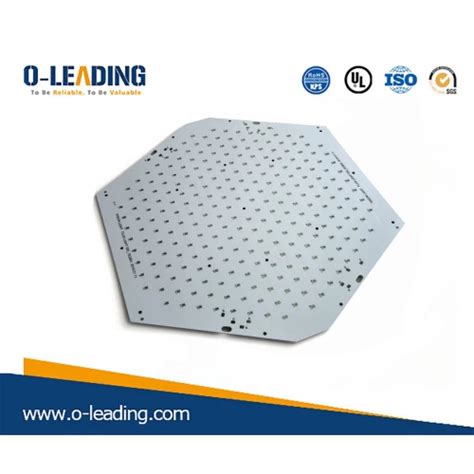
Strategies for Optimizing Production Processes
To enhance the efficiency of consigned PCB assembly, companies must adopt a multifaceted approach that focuses on streamlining operations while maintaining high standards of quality. One crucial strategy is the implementation of lean manufacturing principles, which aim to eliminate waste throughout the production process. By analyzing each step involved in PCB assembly and identifying non-value-added activities, organizations can make informed adjustments that improve overall productivity. Additionally, investing in automation can significantly enhance precision and reduce manual errors during the PCBA process. Utilizing real-time monitoring tools will also allow teams to track performance metrics, enabling them to make data-driven decisions that lead to continuous improvements. Establishing strong communication channels with all stakeholders involved—from suppliers to assembly line workers—is essential for fostering collaboration and ensuring that everyone is aligned with production goals. Furthermore, regular training sessions for staff about the best practices in PCB assembly can help cultivate a culture of excellence and adaptability, ultimately contributing to more efficient production processes and enhanced cost-effectiveness. By embracing these strategies, manufacturers can not only optimize their production efficiency but also solidify their competitive edge in the ever-evolving landscape of electronic manufacturing.
Best Practices for Quality Assurance in PCB Assembly
In the realm of pcb assembly, establishing robust quality assurance measures is crucial to delivering exceptional results and ensuring customer satisfaction. One of the best practices involves implementing a comprehensive Quality Management System (QMS) that aligns with industry standards. This system should encompass regular testing and inspection throughout the entire manufacturing process, focusing on critical factors such as component integrity, solder quality, and overall assembly accuracy.
In addition, it is vital to train personnel adequately in the latest techniques for printed circuit board assembly (PCBA). Their expertise can significantly reduce human errors, which are often a major source of defects. Automation plays a key role in enhancing quality as well; utilizing modern technologies such as selective soldering and automated optical inspection can streamline processes while maintaining high standards.
Moreover, fostering a culture of continuous improvement within teams encourages proactive identification of potential quality issues. Regular feedback loops tied to performance metrics can guide necessary adjustments while minimizing risks. This integration of technology and human insight not only enhances pcb assembly quality but also contributes to overall efficiency, thereby reinforcing the value proposition offered by consigned PCB assembly services. By adhering to these best practices, companies can achieve higher reliability and durability in their electronic products, while also positioning themselves favorably within a competitive marketplace.

Cost-Effectiveness in Electronic Manufacturing
In the realm of electronic manufacturing, the concept of cost-effectiveness plays a pivotal role, particularly in the context of consigned PCB assembly. By leveraging pcba strategies, organizations can significantly reduce expenses associated with labor, materials, and overhead. One primary advantage of consigned PCB assembly services is the ability to maintain tighter control over component sourcing and inventory management; this ensures that companies are not caught off guard by market fluctuations or supply chain disruptions. Moreover, utilizing experienced partner firms for assembly can lead to efficient processes that minimize waste and maximize productivity. This makes it easier to meet production timelines without compromising on quality. Ultimately, a well-implemented pcb assembly strategy allows manufacturers to achieve a favorable balance between costs and quality, fostering both competitiveness and sustainability in today’s fast-paced market. As companies increasingly recognize these benefits, they are likely to adopt best practices that further enhance their ability to deliver high-quality electronic products at competitive prices.
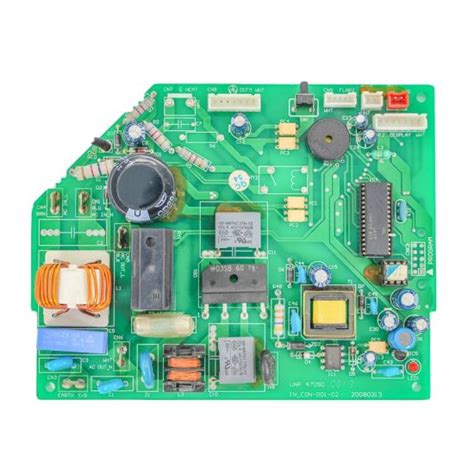
Managing Supply Chain and Logistics in Consigned Assembly
Effective management of the supply chain and logistics is crucial for successful consigned PCB assembly (PCBA) operations. In this model, the responsibility for the procurement of components typically lies with the customer, while the assembly services are provided by an external partner. This dual responsibility necessitates a well-coordinated approach to ensure that components arrive on time and are of high quality. One key strategy is establishing strong communication channels between the customer and the assembly provider. This allows for real-time updates on inventory levels, lead times, and potential delays, which can significantly impact production timelines.
Implementing advanced inventory management systems can also enhance logistics efficiency. By utilizing tools that track component availability and automatically reorder supplies when stocks are low, companies can minimize production interruptions. Furthermore, adopting just-in-time (JIT) inventory can lead to cost savings by reducing excess stock while ensuring that necessary components are available exactly when needed.
Another important factor is selecting reliable logistics partners who have a proven track record in handling pcba materials. Ensuring that these partners adhere to strict quality standards during transportation helps maintain quality assurance, ultimately leading to higher customer satisfaction levels.
As global supply chains become more complex, companies must also stay informed about geopolitical influences and market fluctuations that could affect their supply chains. By regularly analyzing risks and adapting strategies accordingly, businesses can ensure resilience in their PCB assembly processes. Overall, effectively managing supply chain dynamics not only optimizes production efficiency but also provides a competitive edge in the evolving landscape of electronic manufacturing.
Case Studies: Success Stories in Consigned PCB Assembly
In the rapidly evolving industry of electronics, consigned PCB assembly has emerged as a pivotal solution for manufacturers seeking to enhance efficiency and reduce costs. Companies that have embraced this approach often share remarkable success stories highlighting the strategic advantages gained through pcba. For instance, a leading automotive manufacturer adopted a consigned PCB assembly model to streamline its production line. By providing precise component specifications and maintaining tight quality control over materials, they not only accelerated their production timelines but also achieved a significant reduction in waste. Another notable case involved a consumer electronics firm that leveraged the benefits of just-in-time inventory management through consigned assembly. This allowed them to respond swiftly to market demands without overcommitting to unnecessary stock, thereby optimizing their overall operational efficiency. Through these real-world examples, it is evident that implementing pcba services can lead to substantial improvements in product quality, lead times, and cost-effectiveness. Such success stories serve as powerful testimonies to the viability of consigned PCB assembly, encouraging other companies in the sector to explore similar paths for achieving operational excellence.
Future Trends in PCB Manufacturing and Assembly Services
As the electronics industry evolves, future trends in PCB manufacturing and assembly services are expected to significantly enhance the efficiency, quality, and adaptability of production processes. One notable trend is the increasing adoption of advanced automation technologies, which are streamlining PCB assembly workflows. This shift towards automation not only increases production speed but also minimizes the potential for human error, ensuring greater accuracy in component placement and soldering processes. Additionally, the integration of Artificial Intelligence (AI) and Machine Learning (ML) into assembly systems is fostering smarter quality control by enabling real-time monitoring and predictive maintenance protocols.
Furthermore, sustainability is becoming a central theme in manufacturing practices. Companies are increasingly committed to sustainable sourcing of materials and adopting energy-efficient practices. This trend aligns with the growing demand for environmentally friendly solutions while also reducing costs associated with waste management. Alongside sustainability, miniaturization continues to play a crucial role in pcba advancements; designing smaller yet more powerful components will pave the way for innovative applications across various sectors.
Moreover, collaborative partnerships are reshaping supply chain dynamics for consigned assembly. By leveraging partnerships with suppliers and manufacturers, businesses can enhance flexibility and responsiveness to market demands, leading to overall improvements in logistics management.
Lastly, with advancements in technology such as Internet of Things (IoT), manufacturers are not only improving production efficiency but also enabling smarter devices that capitalize on data analytics for better performance post-assembly. These trends indicate that the future of PCBA will be characterized by a focus on innovation and adaptability while meeting the evolving needs of electronic manufacturing within a competitive landscape.
Conclusion
In summary, consigned PCB assembly offers a host of benefits that can significantly enhance the efficiency and effectiveness of the electronic manufacturing process. By leveraging these pcba services, companies can streamline their production while maintaining stringent quality standards. Adopting strategies such as early collaboration with supply chain partners, investing in advanced automation, and implementing thorough quality assurance practices is essential for optimizing production processes. Additionally, maintaining robust logistics management ensures timely delivery of components and finished products, thereby reducing overhead costs. The ongoing evolution in technology presents new opportunities for cost-effectiveness in pcb assembly, making it vital for businesses to stay informed about the latest trends in the marketplace. Emphasizing continuous improvement through best practices not only fosters a culture of quality but also drives sustained growth and competitiveness in the rapidly changing landscape of electronic manufacturing.
FAQs
What is consigned PCB assembly?
Consigned PCB assembly refers to a manufacturing process where the customer supplies the necessary components for the assembly of printed circuit boards (PCBs). The assembly service provider then assembles these components onto the PCBs, delivering a completed product without needing to source parts themselves.
What are the benefits of consigned PCB assembly services?
One of the primary benefits is cost-efficiency, as customers can take advantage of their own supplier relationships and potentially lower component costs. Additionally, it allows for greater control over inventory and component selection, leading to improved quality and adherence to specific project requirements.
How can I optimize my production process in consigned PCBA?
Optimizing your production process in consigned PCBA involves implementing lean manufacturing principles, ensuring effective communication with your assembly partner, and regularly reviewing production processes for inefficiencies. Utilizing advanced technologies such as automation and real-time tracking can also enhance productivity.
What best practices should I follow for quality assurance in PCB assembly?
To ensure quality in your PCB assembly, implement rigorous testing procedures at various stages of the process. Establish clear standards for component quality, maintain detailed documentation, and engage in cross-functional reviews. Continuous training for employees on best practices can further enhance quality.
How does consigned PCB assembly contribute to cost-effectiveness?
Consigned PCB assembly leads to cost-effectiveness by reducing waste and enabling customers to leverage their existing vendor relationships, which can lower procurement costs. Furthermore, by optimizing the supply chain during production planning, companies can minimize overheads and avoid delays that often incur additional charges.
For additional information on enhancing your experience with PCB assembly services, please click here: Andwin PCB Assembly Services.

